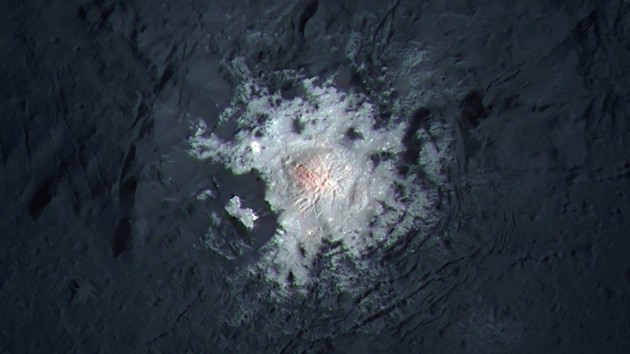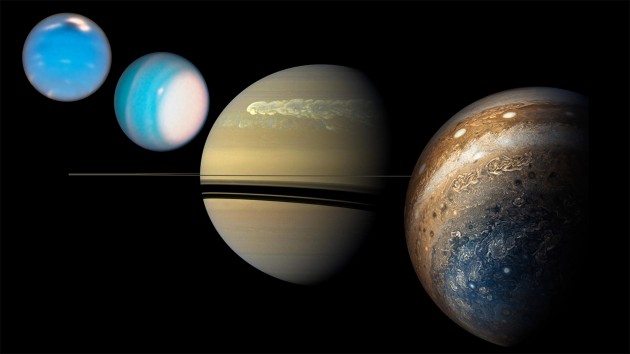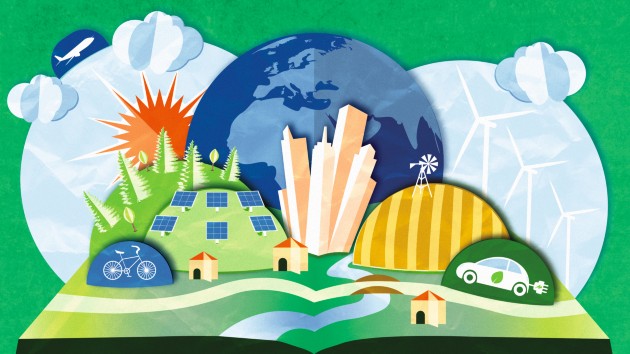Collection |
Collections
Filters
-
Collection Type
-
-
Collection |
 Nobel Prize in Physics 2021
Nobel Prize in Physics 2021
The 2021 Nobel Prize in Physics has been awarded to Syukuro Manabe, Klaus Hasselmann and Giorgio Parisi for their advances in complex physical systems. In
Image: Springer Nature/The Nobel Foundation/Imagesource -
Collection |
 Renewed emissions of ozone depleting substances
Renewed emissions of ozone depleting substances
International agreements like the Montreal Protocol and the Kigali Amendment have been largely successful in reducing the emissions of ozone depleting substances.
Image: Panther Media GmbH / Alamy Stock Photo -
Collection |
 Land-use changes and impacts
Land-use changes and impacts
Land-cover change can have profound impacts on the Earth system. Unsustainable land use, driven by urban and agricultural expansion, not only causes important impacts on climate but also leads to ecosystem and environmental degradation.
Image: Cícero Castro / Alamy Stock Photo -
Focus |
 Megathrusts
Megathrusts
Megathrusts, faults at the interface between one tectonic plate overriding another, can generate large earthquakes and tsunamis.
Image: Larry Geddis / Alamy Stock Photo -
Collection |
Natural Hazards
When nature strikes with full force, there is often little that can be done against.
Image: Sebastian Mueller -
Collection |
 Harnessing the power of computational science
Harnessing the power of computational science
The use and development of sophisticated computing capabilities to analyse and solve real-world, challenging problems has undoubtedly revolutionized the way researchers do science.
-
Collection |
 Dawn XM2 at Occator crater
Dawn XM2 at Occator crater
Close to the end of its mission, the Dawn spacecraft performed high resolution observations of Occator crater at Ceres in order to study its bright points (faculae) at unprecedented detail. These observations establish Ceres as an ocean world.
Image: NASA/JPL-Caltech/UCLA/MPS/DLR/IDA/PSI/LPI -
Focus |
 Soil organic carbon
Soil organic carbon
Soil organic carbon is a large component of the global carbon cycle.
Image: Dahlhaus Kniese / Alamy Stock Photo -
Collection |
 Planetary Interiors
Planetary Interiors
Recent years have been an exciting time to unravel the mysteries of planetary interiors. A number of ongoing international space missions, ever evolving new technologies and numerical methods, and re-analysis of existing data are allowing us to gain new insights on the internal structures of planetary bodies.
Image: From closest to furthest (or right to left) respectively: Jupiter (Juno perijove 6, Credit:NASA/SwRI/MSSS/Gerald Eichstädt/Seán Doran); Saturn during the great storm of 2010–2011 (Cassini, Credit: NASA/JPL-Caltech/Space Science Institute); Uranus and Neptune (Hubble, Credits: NASA/ESA/A. Simon (NASA Goddard Space Flight Center), and M.H. Wong and A. Hsu (University of California, Berkeley)). -
Collection |
 InSight at Mars
InSight at Mars
NASA’s InSight lander arrived on Mars in late 2018. Primarily a geophysics mission, InSight aims to constrain the planet’s present-day geologic activity and its interior evolution.
Image: NASA/JPL-Caltech -
Collection |
 Arctic change and mid-latitude weather
Arctic change and mid-latitude weather
The Arctic is warming much faster than the rest of the planet, a phenomenon called Arctic amplification.
Image: imageBROKER / Alamy Stock Photo

 Research in support of COP26
Research in support of COP26